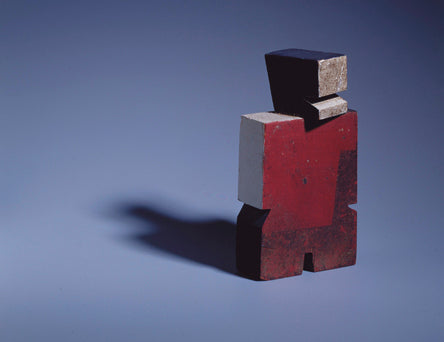Description
The work "Man with red chest" by Joaquín Torres García, painted in 1929, is presented as a fascinating representation of the visual language of the Uruguayan artist, who is a benchmark of modern art in Latin America. Torres García was known for his neocubist approach and his attempt to integrate local and universal elements into his work, looking for his own identity for Latin American art. This painting, That in many ways he encapsulates his style, it is a paradigmatic example of his ability to merge abstraction with figuration.
At first glance, "man with red chest" attracts us with his vibrant color palette and his geometric composition. The use of the red color stands out in the torso of the represented man, creating a strong contrast with the most off tones surrounding the figure. This color choice not only provides an immediate visual impact, but can also be interpreted as a symbol of vitality, energy and emotion, which are often characteristics related to Torres García's work. The figure seems to emerge on the pictorial surface, highlighting the game between the form and the background, a crucial aspect in the neocubism that Torres García hugged.
The shape of man, which might seem simple at first glance, is broken down into a series of plans and lines that suggest both three -dimensionality and two -dimensionality, a game that highlights the dialogue between perception and representation. Through this technique, Torres García manages to give an impression of movement and dynamism, inviting the viewer to interact with the work, to read it from different angles and to mentally reconfigure the visual experience.
The absence of a literal realism in the representation of the human body is a distinctive feature of neocubism, and here it is also evident. The face of man is almost abstract, which suggests a conception of the subject more focused on his emotional and symbolic expression than in the faithful representation of his appearance. This approach leads us to question what we see and consider the essence behind the form, the individual behind the color and emotion behind the image.
Torres García also incorporates elements within his work that refer to his interest in geometry and order. The forms that make up the background respond to a pattern that feels deliberately built, which reflects its formation and admiration for artists of the past, as well as their desire to invent a new visual language that will talk about its cultural context. This dialogue between European constructivist art and Latin American cultural roots is one of the fundamental pillars of its work.
Also, in the context of the 1920s, "man with red chest" reflects a moment of search and renewal in the art of the region, where artists were exploring new forms of expression that broke with traditional canons. Torres García's work is part of this current, being both a legacy and an invitation to experimentation.
Finally, although "man with red chest" has been less known compared to some of his most emblematic works, such as "the construction of a country", represents an essential chapter in the evolution of the author's style. Through its ability to combine color, shape and emotion, Torres García offers us a piece that is both a portrait and a meditation on the human condition, and that resonates with the incessant search for a place in the vast panorama of world art. Thus, this work invites spectators to enter the rich universe of Torres García and inspire themselves in their brilliant and multifaceted artistic vision.
KUADROS ©, a famous paint on your wall.
Hand-made oil painting reproductions, with the quality of professional artists and the distinctive seal of KUADROS ©.
Art reproduction service with satisfaction guarantee. If you are not completely satisfied with the replica of your painting, we refund your money 100%.

